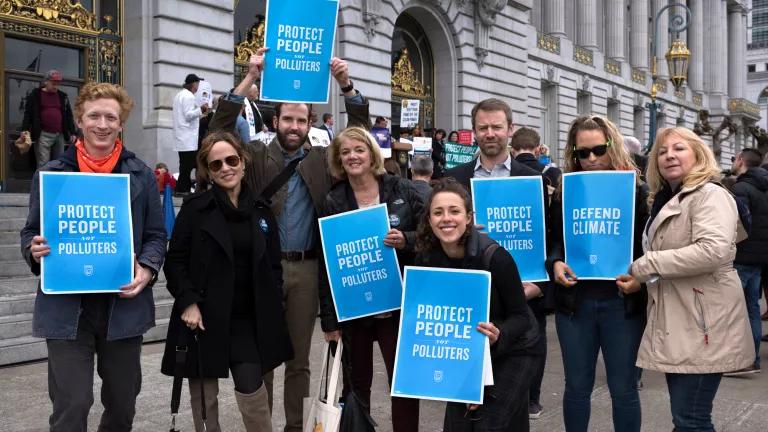Trump Can’t Stop This: Global Renewable Energy Booms

While President Trump tried to derail U.S. climate progress during his first month in office, India, China, and Latin America forged ahead with clean energy.
Welcome to our first international climate action update, where we take a moment each month to remember that Donald Trump is not the president of the world—and celebrate other countries’ progress in the global battle against climate change.
As President Trump transitioned into office, clean energy continued to overtake fossil fuels as the main source of new energy investments around the world. While the final 2016 numbers aren’t yet published, preliminary estimates put the total wind and solar installations at new records. About 70 gigawatts of new solar generation and 59 gigawatts of new wind power came online in 2016. And this amounts to real dollars moving into the clean energy economy, with $287 billion in new clean energy investments in 2016, according to Bloomberg New Energy Finance.
You can see the fruits of these investments in key countries around the world, including India, China, Chile, and Mexico.
India heads steadily toward its massive renewable electricity targets.
At the end of 2016, India had installed 11 gigawatts of solar and 29 gigawatts of wind capacity, moving significantly closer to its goals of 100 gigawatts of solar and 75 gigawatts of wind by 2022. In just a few short years, India has installed nearly as much solar capacity as the three top U.S. states—California, New Jersey, and Massachusetts—combined, making India the fourth-largest wind power country in the world.
Solar power in India is becoming increasingly cost-effective and rapidly scalable. In 2016, the country commissioned the largest solar plant in the world at 648 megawatts, and it was built in a mere eight months—that’s much quicker than the three to four years it takes to build a similar-size coal power plant. This month, an even bigger solar plant of 750 megawatts attracted record low bids of about $0.04/kWh, validating the government’s decision to cancel four coal power plants and effectively choose solar as the preferred energy source for meeting India’s rising energy demands.
Declining solar prices are good news for extending clean energy to more than 300 million people in India who currently lack access to the electric grid. NRDC is working with partners to provide clean energy to 40,000 women and their families in the state of Gujarat. So far, about 500 households have transitioned to using solar energy instead of diesel generators, a switch that will lead to improved quality of life and health conditions for these families. In light of President Trump’s stance on climate change, the Indian minister in charge of energy, Piyush Goyal, recently reaffirmed his country’s leadership by saying, “Clean energy is not something that we are working on because somebody else wants us to do it. It’s a matter of faith and the faith of the leadership in India. Nothing on earth is going to stop us from doing that.”
China’s renewable energy continues to set records.
China vaulted to the top of the world in solar power capacity in 2016, passing Germany, which had been the long-standing leader. The country added more than 34 gigawatts of solar capacity last year—nearly 1.5 times the amount the United States has installed in its entire history. China also installed more than 23 gigawatts of wind power in 2016, almost three times as much as the United States added that year. As the world leader in renewable energy investment, China put almost $88 billion into renewables in 2016—one-third more than the United States.
Underscoring the Chinese focus on clean energy leadership going forward, the deputy head of China’s National Energy Administration, Li Yangzhe, said in January that “renewable energy will be the pillar for China’s energy structure transition.” The country already employs 3.5 million people in the renewable energy industry, a number that is expected to grow to 13 million by 2020. Even as President Trump signals that he wants to take the United States backward on clean energy and the employment it provides, China is continuing to compete in the 21st-century market for wind and solar jobs and technology.
Clean energy booms in Latin America as new markets emerge.

Latin America has recently proven itself to be a regional powerhouse in clean energy. Three out of the top five developing countries for clean energy are in this part of the world: Chile, Brazil, and Uruguay. In 2016, energy auctions in Chile and Mexico set record-low prices for renewables. Chile’s auction set the world’s lowest price for solar power at $0.03/kWh—half the price of coal in the same auction. And Mexico’s auction resulted in contracts for the addition of five gigawatts of new clean energy. That’s equivalent to the current electricity consumption for all of Mexico City.




